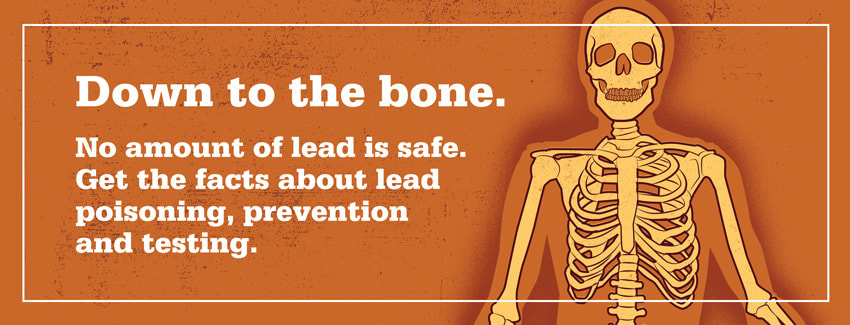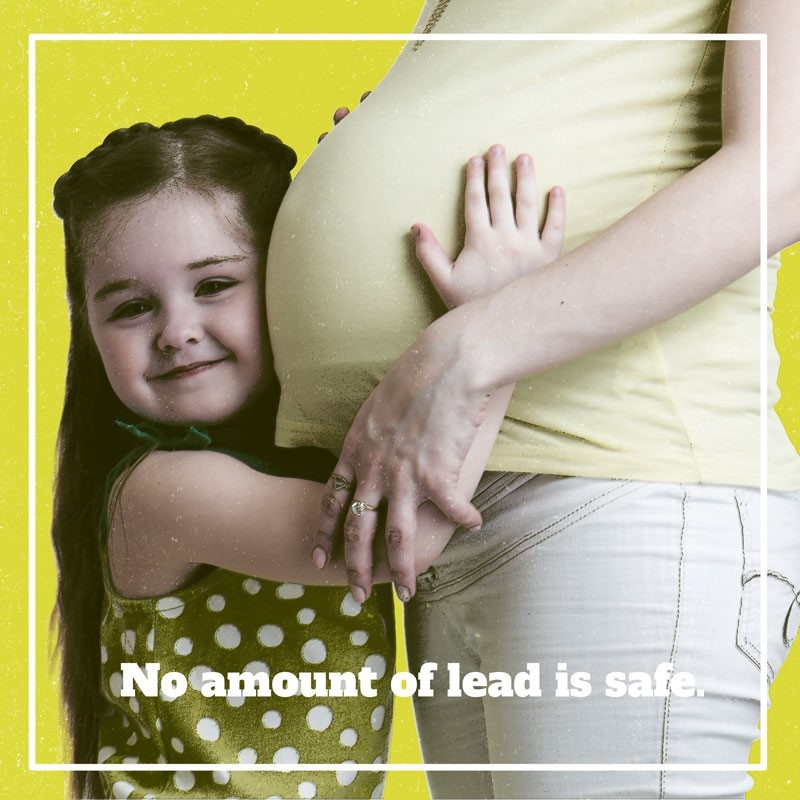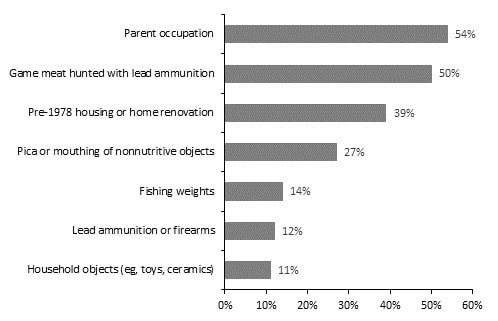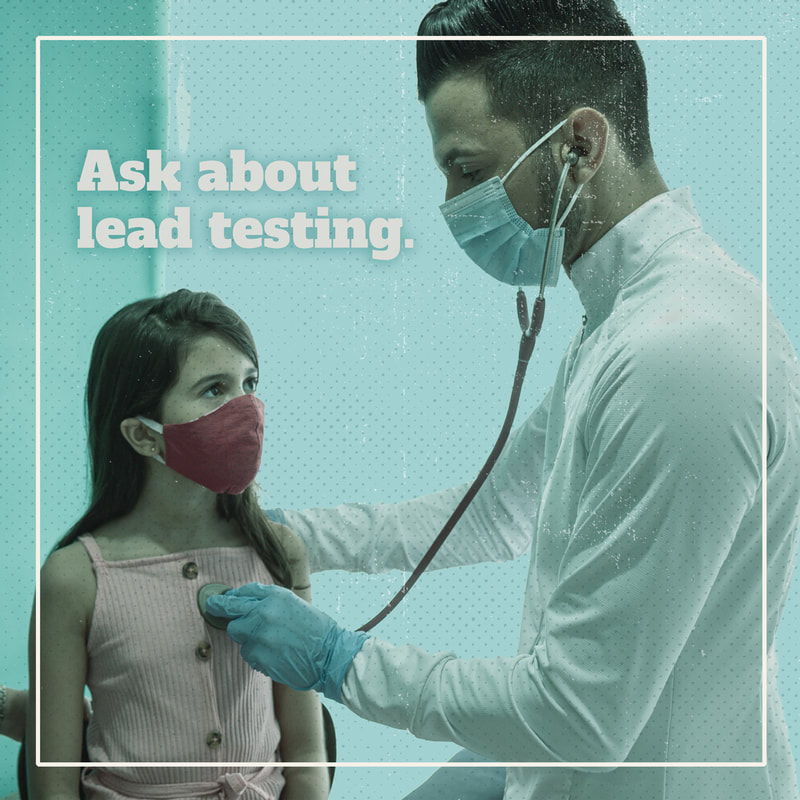Ready for reliable and friendly service in a towing company? Combined with competitive rates? Call Force 1 Towing and Auto Body in Catasauqua at 610-266-6721
Get the Lead Out, Alaska!
National Lead Poisoning Prevention Week – October 2021
Each year, the Department of Health and Social Services (DHSS) participates in National Lead Poisoning Prevention Week (NLPPW) as part of statewide and national efforts to reduce childhood exposure to lead. We work together with individuals, organizations, industry, and state, tribal, territorial, and local governments to increase awareness on how to prevent lead poisoning. Partners include the U.S. Department of Housing and Urban Development (HUD), the U.S. Environmental Protection Agency (EPA), the Centers for Disease Control and Prevention (CDC), and other state health departments.
Read on to learn about common lead exposure sources in Alaska and lead testing recommendations and requirements.
Read on to learn about common lead exposure sources in Alaska and lead testing recommendations and requirements.
No Amount of Lead is SafeLead occurs naturally in the earth’s crust. Human activities such as mining, manufacturing and the use of leaded gasoline have spread lead throughout the environment, including our homes and workplaces. Even small amounts of lead can cause harm, especially to fetuses and young children.
When absorbed into the body, lead can cause permanent damage to the brain and nervous system, learning and behavior problems, hearing and speech problems, and slow growth and development. Absorption of lead appears to be higher in children who have low dietary iron, calcium, or zinc intakes, so a well-balanced diet is important.
Lead Exposure Sources in AlaskaThe Alaska Section of Epidemiology collects and maintains data for all blood lead level tests in the state. Follow-up investigations are conducted over the telephone with healthcare providers and the parents of children under 18 years of age that have a blood lead level at or above the CDC’s blood lead reference value of 5 µg/dL (micrograms/deciliter) which was reduced this week by the CDC to 3.5 µg/dL (micrograms/deciliter)* During these investigations, possible exposure sources are identified, and education is provided to the parents.
An analysis of data collected during follow-up investigations of children under 6 years of age from January 2011 to April 2018 revealed common sources of childhood lead exposure statewide (Figure 1). In many instances, multiple possible lead exposure sources are identified for an individual child. Because the Section of Epidemiology does not conduct on-site environmental investigations for persons identified with an elevated blood lead level, the confirmed source(s) of exposure for most cases cannot be firmly established.
Figure 1. Potential Lead Exposure Sourcesa,b among Children Aged ≤5 Years with an Elevated Blood Lead Level — Alaska, January 2011–April 2018
When absorbed into the body, lead can cause permanent damage to the brain and nervous system, learning and behavior problems, hearing and speech problems, and slow growth and development. Absorption of lead appears to be higher in children who have low dietary iron, calcium, or zinc intakes, so a well-balanced diet is important.
Lead Exposure Sources in AlaskaThe Alaska Section of Epidemiology collects and maintains data for all blood lead level tests in the state. Follow-up investigations are conducted over the telephone with healthcare providers and the parents of children under 18 years of age that have a blood lead level at or above the CDC’s blood lead reference value of 5 µg/dL (micrograms/deciliter) which was reduced this week by the CDC to 3.5 µg/dL (micrograms/deciliter)* During these investigations, possible exposure sources are identified, and education is provided to the parents.
An analysis of data collected during follow-up investigations of children under 6 years of age from January 2011 to April 2018 revealed common sources of childhood lead exposure statewide (Figure 1). In many instances, multiple possible lead exposure sources are identified for an individual child. Because the Section of Epidemiology does not conduct on-site environmental investigations for persons identified with an elevated blood lead level, the confirmed source(s) of exposure for most cases cannot be firmly established.
Figure 1. Potential Lead Exposure Sourcesa,b among Children Aged ≤5 Years with an Elevated Blood Lead Level — Alaska, January 2011–April 2018
a Often times, multiple possible exposure sources are identified for an individual child during interviews; therefore, percentages total >100%.
b Exposure sources that were reported in <10% of investigations have been omitted from this figure. For the complete list of possible lead exposure sources, see the full journal article available online.
The analysis of possible exposure sources suggests that the leading risk factors for elevated blood lead levels among children in Alaska include parent occupation and consumption of game meat hunted with lead ammunition. Parent occupation refers to parents who work with lead or who are exposed to lead at their job or in a hobby. Such occupations include work in mining, with airplanes or cars, and with firearms. For more detailed information about the analysis of exposure sources among Alaska children read the full journal article available online. For additional information on lead exposure sources in Alaska and how to prevent exposure, visit the Alaska Lead Surveillance Program webpage.
Nationally, child lead poisoning prevention strategies focus on children in low-income communities living in old housing with lead paint. In Alaska, lead paint in old housing is a less frequent source of exposure for Alaska children with elevated blood lead levels than in the lower 48.
b Exposure sources that were reported in <10% of investigations have been omitted from this figure. For the complete list of possible lead exposure sources, see the full journal article available online.
The analysis of possible exposure sources suggests that the leading risk factors for elevated blood lead levels among children in Alaska include parent occupation and consumption of game meat hunted with lead ammunition. Parent occupation refers to parents who work with lead or who are exposed to lead at their job or in a hobby. Such occupations include work in mining, with airplanes or cars, and with firearms. For more detailed information about the analysis of exposure sources among Alaska children read the full journal article available online. For additional information on lead exposure sources in Alaska and how to prevent exposure, visit the Alaska Lead Surveillance Program webpage.
Nationally, child lead poisoning prevention strategies focus on children in low-income communities living in old housing with lead paint. In Alaska, lead paint in old housing is a less frequent source of exposure for Alaska children with elevated blood lead levels than in the lower 48.
Blood Lead Testing
According to the most recently available data from CDC, in 2018 only 5.8% of Alaska children under the age of 6 had been tested for lead, compared to the national average of 17.6%. Alaska’s low rate of lead testing likely results in missed cases of elevated blood lead levels among children. Blood lead testing is the only way to know for sure whether someone has been exposed to lead.
Blood lead testing is currently required for Medicaid recipients at 12 and 24 months of age. Any child receiving Medicaid between ages 24–72 months with no record of a previous blood lead screening test must also be tested. The CDC and DHSS also recommend testing if there is a known or suspected exposure to lead.
The DHSS Childhood Lead Risk Questionnaire can be used to help determine if a child should be tested.
Blood Lead ReportingAlaska Public Health Reporting Law (7 AAC 27.014) requires healthcare providers and laboratories to report all blood lead levels to the Section of Epidemiology. Reports must include the patient’s name, date of birth, sex, race, ethnicity, community of residence, test results, and the provider’s name and address. Reporting of levels ≥5 µg/dL* in children aged <18 years and levels of ≥10 µg/dL for adults aged ≥18 years is required within 1 week of receiving the result. All other levels are required to be reported within 4 weeks of receiving the results. Reports may be made by electronic secure file transfer, fax (907-561-4239), or mail to: Section of Epidemiology, 3601 C Street, Suite 540, Anchorage AK 99503. The report form can be found online.
*On October 28, 2021, the Centers for Disease Control and Prevention (CDC) announced an update to their Blood Lead Reference Value (BLRV). The previous value of 5 µg/dL has been reduced to 3.5 µg/dL. For more information about the CDC’s BLRV, visit https://www.cdc.gov/nceh/lead/data/blood-lead-reference-value.htm.
ResourcesAlaska Department of Health and Social Services (DHSS)
According to the most recently available data from CDC, in 2018 only 5.8% of Alaska children under the age of 6 had been tested for lead, compared to the national average of 17.6%. Alaska’s low rate of lead testing likely results in missed cases of elevated blood lead levels among children. Blood lead testing is the only way to know for sure whether someone has been exposed to lead.
Blood lead testing is currently required for Medicaid recipients at 12 and 24 months of age. Any child receiving Medicaid between ages 24–72 months with no record of a previous blood lead screening test must also be tested. The CDC and DHSS also recommend testing if there is a known or suspected exposure to lead.
The DHSS Childhood Lead Risk Questionnaire can be used to help determine if a child should be tested.
Blood Lead ReportingAlaska Public Health Reporting Law (7 AAC 27.014) requires healthcare providers and laboratories to report all blood lead levels to the Section of Epidemiology. Reports must include the patient’s name, date of birth, sex, race, ethnicity, community of residence, test results, and the provider’s name and address. Reporting of levels ≥5 µg/dL* in children aged <18 years and levels of ≥10 µg/dL for adults aged ≥18 years is required within 1 week of receiving the result. All other levels are required to be reported within 4 weeks of receiving the results. Reports may be made by electronic secure file transfer, fax (907-561-4239), or mail to: Section of Epidemiology, 3601 C Street, Suite 540, Anchorage AK 99503. The report form can be found online.
*On October 28, 2021, the Centers for Disease Control and Prevention (CDC) announced an update to their Blood Lead Reference Value (BLRV). The previous value of 5 µg/dL has been reduced to 3.5 µg/dL. For more information about the CDC’s BLRV, visit https://www.cdc.gov/nceh/lead/data/blood-lead-reference-value.htm.
ResourcesAlaska Department of Health and Social Services (DHSS)
- Alaska Lead Surveillance Program
- Lead Free Alaska webpage
- DHSS Childhood Lead Risk Questionnaire
- Heavy Metal and Toxic Exposure Report Form
- Print Materials:
Are you looking for a shipping solution? Maybe you need to change freight carriers? Find out what the hard working and reliable people at Team Worldwide can do over land, sea and air





